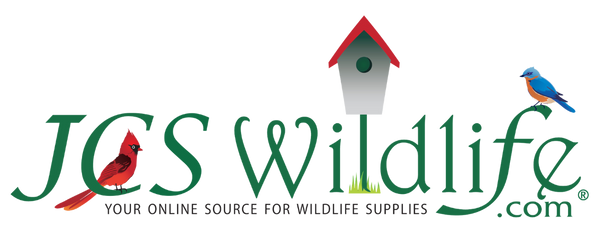If you’ve ever spotted a small black-and-white woodpecker tapping away at a tree in your backyard, chances are you’ve met either a Downy Woodpecker or a Hairy Woodpecker. These two look-alike birds are among the most common woodpeckers in North America—and they’re favorites among backyard birders. But how do you tell them apart? What do they eat? And how can you attract them to your yard?
Let’s dive into the delightful world of Downy and Hairy Woodpeckers with this comprehensive guide, perfect for bird enthusiasts and wildlife lovers alike!
1. Meet the Downy Woodpecker
The Downy Woodpecker (Picoides pubescens) is the smallest woodpecker in North America, measuring just about 6 inches long. Despite its petite size, it’s full of personality and often seen flitting around feeders or clinging to tree trunks.
Key Features:
- Size: ~6 inches
- Bill: Short and stubby
- Plumage: Black and white with a white belly
- Male: Red patch on the back of the head

2. Meet the Hairy Woodpecker
The Hairy Woodpecker (Picoides villosus) is like the Downy’s bigger cousin. At around 9 inches long, it’s noticeably larger and has a longer, chisel-like bill.
Key Features:
- Size: ~9 inches
- Bill: Long and sturdy
- Plumage: Similar black and white pattern
- Male: Also has a red patch on the back of the head

3. Similarities Between Downy and Hairy Woodpeckers
At first glance, these two birds look nearly identical. Here are some traits they share:
- Coloration: Both have black-and-white plumage with white undersides.
- Red Patch: Males of both species sport a red patch on the back of the head.
- Habitat: Both can be found across North America and adapt well to human environments.
- Diet: Insects, seeds, berries, and suet are favorites.
They’re also both cavity nesters, meaning they excavate holes in trees to raise their young.

4. Differences Between Downy and Hairy Woodpeckers
Despite their similarities, there are key differences that help birders tell them apart:
Pro tip: If you’re unsure which one you’re seeing, check the bill size relative to the head. Downy’s bill is much shorter than Hairy’s.

5. Where to Find Them
Both species are widespread across North America, but their preferences differ slightly:
- Downy Woodpeckers: Found in open woodlands, parks, orchards, and suburban areas.
- Hairy Woodpeckers: Prefer mature forests but will venture into backyards, especially in winter.
They’re year-round residents in most regions, so you can spot them even during snowy months.

6. What They Eat
Woodpeckers are nature’s pest control experts! Their diet includes:
- Insects: Beetles, ants, caterpillars, and larvae
- Seeds: Especially sunflower seeds
- Berries: Elderberries, dogwood, and more
- Suet: A favorite winter treat
To attract them, offer suet cakes, peanut butter blends, or mealworms in your feeders. They also love bark butter and will forage on dead trees for insects.

7. How to Attract Them to Your Yard
Want to make your backyard a woodpecker haven? Here’s how:
- Install suet feeders: Hang them near trees or shrubs.
- Offer natural food: Leave dead trees or logs for insect foraging.
- Provide water: Birdbaths or shallow dishes work well.
- Plant native trees: Oaks, maples, and pines are great choices.
- Avoid pesticides: Let the woodpeckers handle the bugs!
Bonus tip: Use feeders with tail props to help Hairy Woodpeckers balance while feeding.
8. Nesting and Breeding Habits
Both Downy and Hairy Woodpeckers are cavity nesters. They excavate holes in dead trees or branches to lay their eggs.
- Breeding Season: Spring to early summer
- Clutch Size: 3–6 eggs
- Incubation: About 12 days
- Fledging: Young leave the nest after 20–25 days
You can support nesting by installing woodpecker nest boxes or leaving snags (dead trees) in safe areas.

9. Fun Facts About Downy and Hairy Woodpeckers
Let’s lighten things up with some fun trivia!
-
- Woodpecker tongues wrap around their skulls to cushion their brains while pecking.
- Downy Woodpeckers can drum up to 20 times per second!
- Hairy Woodpeckers are known to remember feeder locations year after year.
- Both parents take turns incubating the eggs.
- They use drumming to communicate territory boundaries—like nature’s Morse code!
- Woodpeckers have zygodactyl feet—two toes facing forward and two backward—which help them grip tree bark securely.
- Their skulls are shock-absorbent! Specialized bone structures and spongy tissue protect their brains.
- Downy Woodpeckers sometimes mimic the foraging behavior of chickadees to avoid predators.
- Hairy and Downy Woodpeckers aren’t closely related; their resemblance is due to convergent evolution.
- Hairy Woodpeckers are excellent ant hunters.
- Downy Woodpeckers are more likely to visit feeders in urban areas.
- Young woodpeckers don’t drum until they’re older, but they start practicing pecking behaviors in the nest.

10. Shop Essentials for Woodpecker Lovers
If you’re ready to welcome these feathered friends, check out our top woodpecker-friendly products:
- Suet Feeders: Tail-prop designs for easy feeding
- Suet Cakes: High-energy blends for year-round nutrition
- Nest Boxes: Designed for cavity-nesting birds
- Bird Baths: Heated options for winter
- Field Guides: Learn to ID birds like a pro
Click here for JCS Wildlife Suet Feeders
Click here for JCS Wildlife Suet Cakes
Click here for JCS Wildlife Woodpecker Favorite Seed Cylinders
Click here for JCS Wildlife Woodpecker Favorite Loose Seed Blend
11. Final Thoughts
Downy and Hairy Woodpeckers are more than just backyard visitors—they’re fascinating, helpful, and fun to watch. Whether you’re a seasoned birder or just starting out, these birds offer endless opportunities for observation and enjoyment.
So grab your binoculars, fill your feeders, and get ready to meet your new favorite feathered neighbors!



